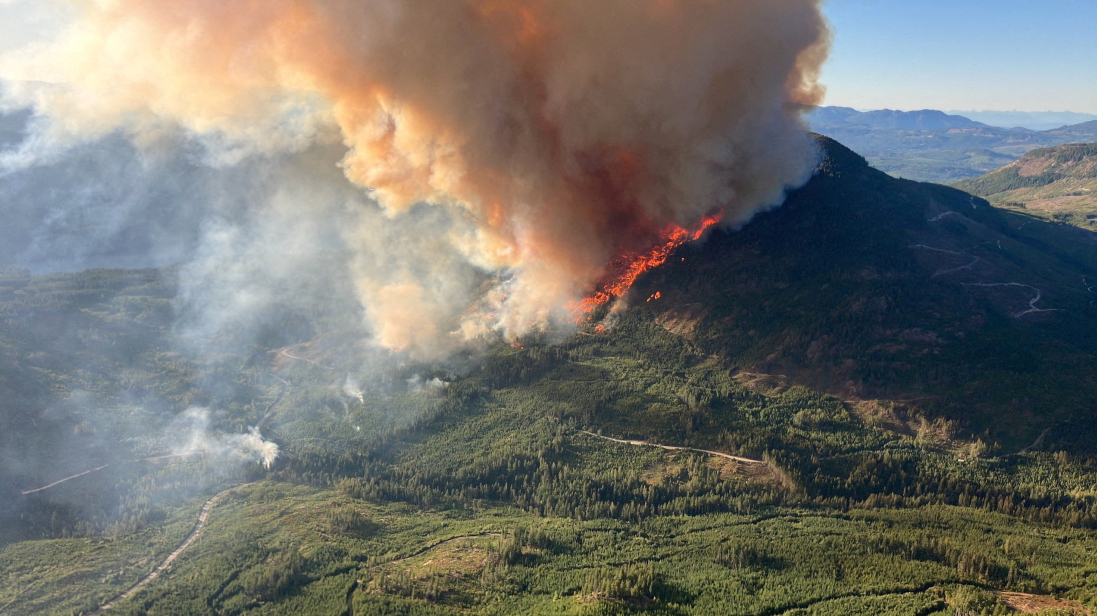White House orders military to focus on 'quarantine' of Venezuela oil
The White House has instructed U.S. military forces to concentrate largely on enforcing a “quarantine” on Venezuelan oil exports for at least the ...

Canada is facing its second-worst wildfire season on record, with 7.8 million hectares already burned, and the fires could persist for weeks, according to federal officials.
Warmer-than-usual weather forecasted for southern British Columbia, Alberta, and Saskatchewan until the end of September poses a significant risk of new fires in these already dry regions. Julienne Morissette of Natural Resources Canada noted that current fires have a "high likelihood" of continuing into autumn due to the above-average temperatures.
The wildfires have also impacted Atlantic provinces such as Newfoundland and Nova Scotia, driven by unusual dryness. However, more than 60% of the burned areas are in Saskatchewan and Manitoba. Since 2023, more than 25 million hectares of land across Canada have been scorched, generating large smoke plumes that have spread to much of the United States. U.S. politicians have voiced concerns about the smoke disrupting summer activities and vacations.
The wildfire seasons have led to mass evacuations, particularly in northern Canada, where many Indigenous communities are located. Around 13,000 people from First Nations remain away from their homes, and military aircraft assisted in transporting residents to shelters, including hotel rooms far from home, in Niagara Falls, Ontario. Some communities still need infrastructure repairs due to the damage caused by fire and smoke, making it difficult for evacuees to return.
Federal officials attribute the worsening wildfire risk to climate change, with warmer temperatures and longer snow-free seasons increasing the potential for fires. Corey Hogan, parliamentary secretary to the minister of energy and natural resources, emphasised that fires have become a year-round threat, urging Canadians to be proactive in fire prevention throughout the entire year.
Vince Zampella, co-creator of the Call of Duty gaming franchise, has died in a car crash involving a Ferrari crash on Monday in Los Angeles, United States.
Israeli Prime Minister Benjamin Netanyahu said Israel is monitoring recent Iranian military exercises and will raise the issue with U.S. President Donald Trump during his visit to Washington next week.
U.S. President Donald Trump has approved plans to construct a new class of battleships, which he described as larger, faster and significantly more powerful than any previous U.S. warship.
Thailand and Cambodia both reported fresh clashes on Wednesday, as the two sides prepared to hold military talks aimed at easing tensions along their shared border.
Libya’s chief of staff, Mohammed Ali Ahmed Al-Haddad, has died in a plane crash shortly after departing Türkiye’s capital, Ankara, the prime minister of Libya’s UN-recognised government has said.
A majority of Russians expect the war in Ukraine to end in 2026, state pollster VTsIOM said on Wednesday, in a sign that the Kremlin could be testing public reaction to a possible peace settlement as diplomatic efforts to end the conflict intensify.
The White House has instructed U.S. military forces to concentrate largely on enforcing a “quarantine” on Venezuelan oil exports for at least the next two months, a U.S. official told Reuters, signalling that Washington is prioritising economic pressure over direct military action against Caracas.
Military representatives from Cambodia and Thailand met in Chanthaburi province on Wednesday ahead of formal ceasefire talks at the 3rd special GBC meeting scheduled for 27th December.
France’s government is moving to pass emergency legislation to keep the state operating into January after lawmakers failed to agree on a 2026 budget, as pressure grows from investors and credit ratings agencies.
Australia’s most populous state has passed sweeping new gun control and anti-terror laws following a mass shooting at Bondi Beach, tightening firearm ownership rules, banning the public display of terrorist symbols and expanding police powers to restrict protests.
You can download the AnewZ application from Play Store and the App Store.

What is your opinion on this topic?
Leave the first comment